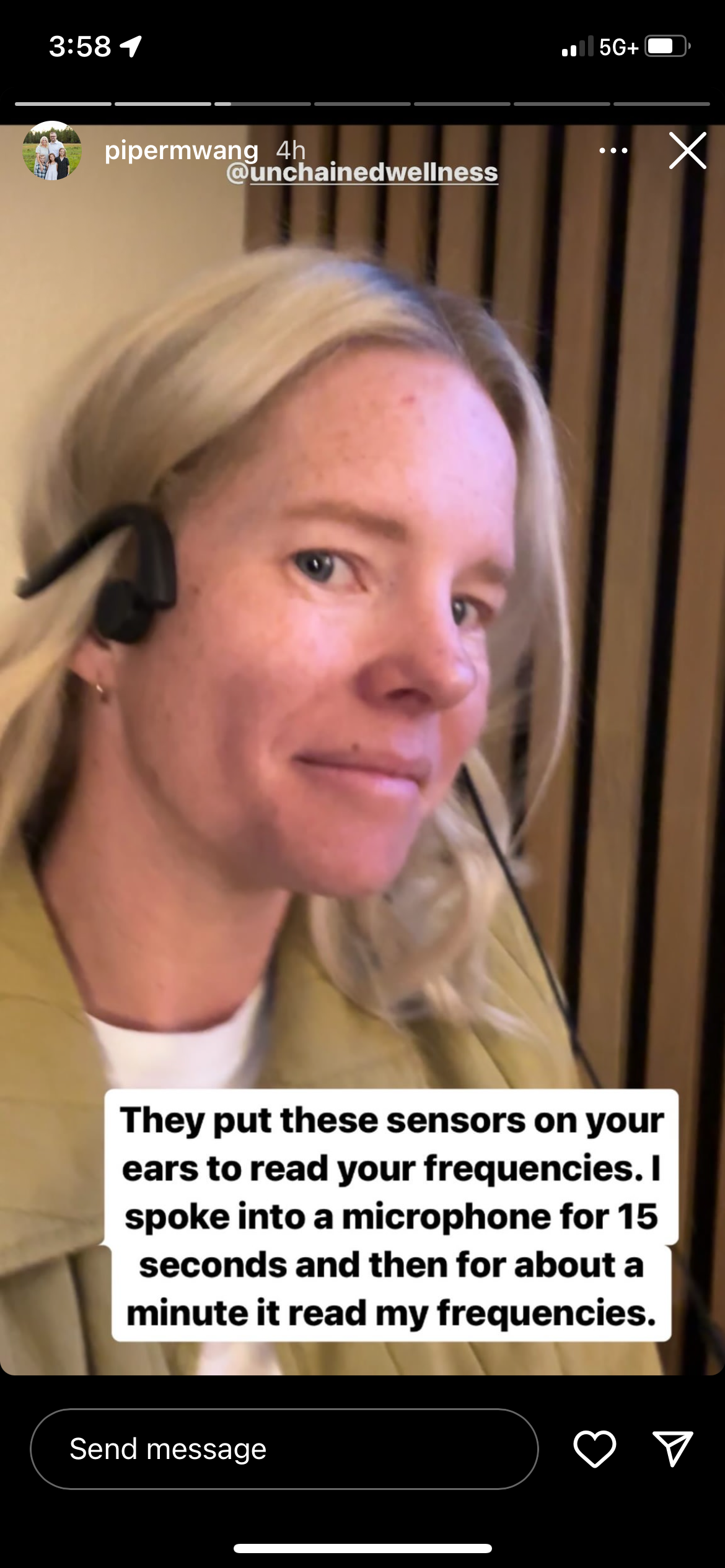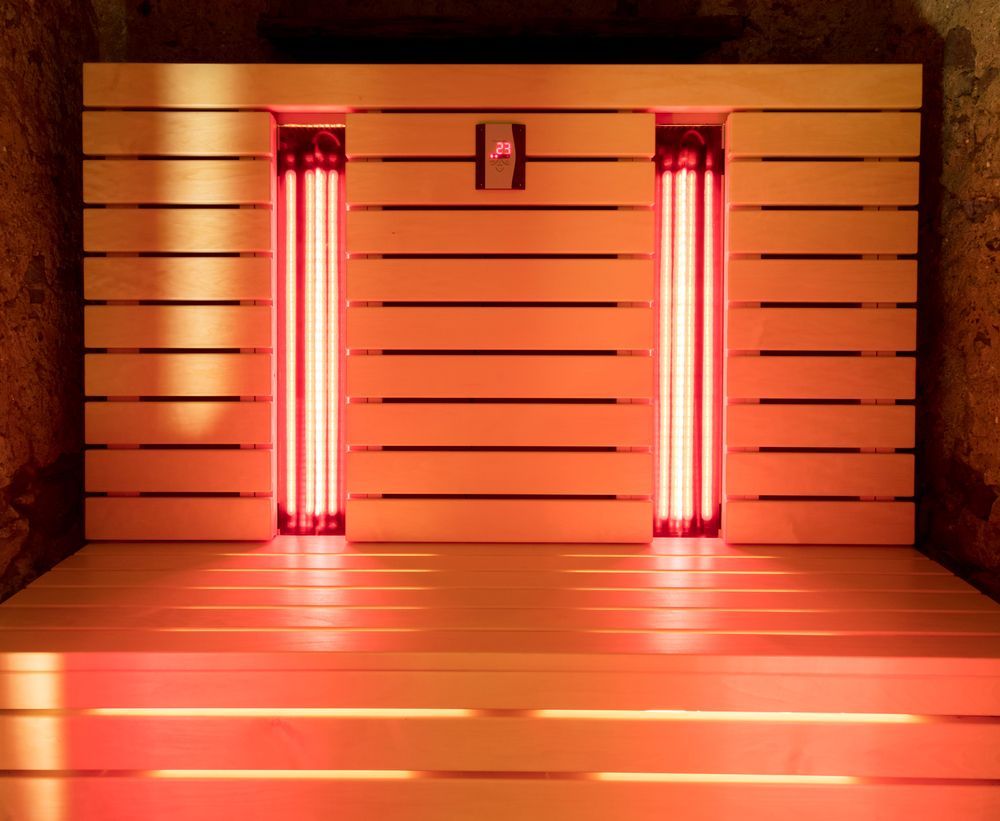The Unchained Blog
UNCHAINED blog articles
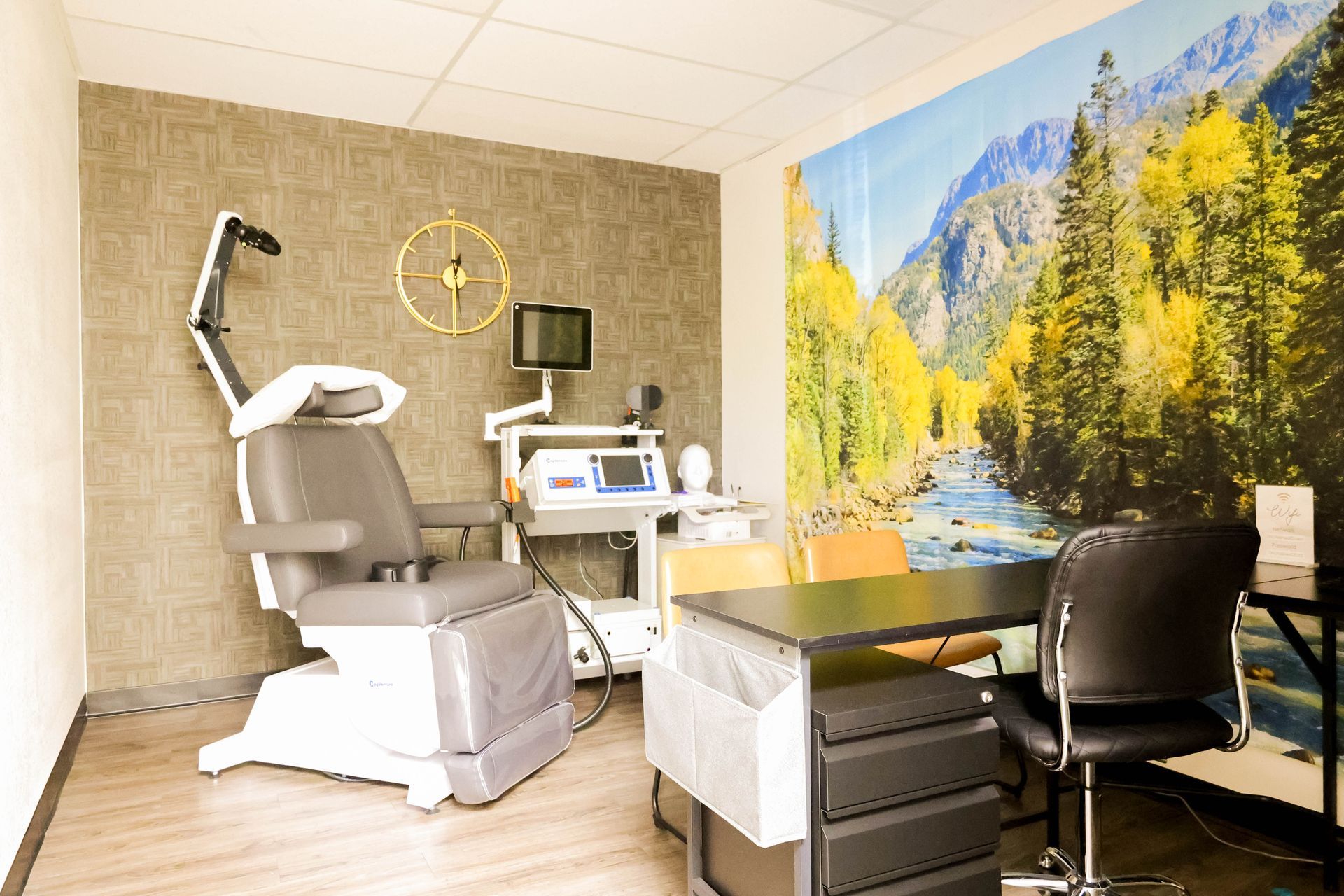
By Mason Lundell
•
September 13, 2024
Discover Medication-Free Depression Treatment | TMS Therapy Welcome to Unchained Wellness Clinic in Gilbert, Arizona , where we specialize in non-medication services to improve lifestyles and mental health. Our holistic approach empowers individuals through innovative treatments, including Transcranial Magnetic Stimulation (TMS) therapy. TMS therapy is a non-invasive outpatient procedure that effectively treats depression without medication. At Unchained, we believe in combining TMS therapy with lifestyle changes such as exercise, balanced nutrition, stress management, quality sleep, and social support to enhance treatment outcomes. With our state-of-the-art MagVenture TMS device, we offer the highest standard of care. Break free from depression and discover a life of vitality and well-being at Unchained Wellness Clinic. Together with our dedicated team of experts, we empower individuals to rise above the limitations of depression, embrace a life filled with purpose and joy, and discover the incredible strength they possess within themselves. Understanding TMS Therapy TMS Therapy, short for Transcranial Magnetic Stimulation, is a revolutionary non-invasive treatment that holds the power to transform lives affected by depression. At Unchained Wellness Clinic, we are proud to offer this cutting-edge therapy that goes beyond traditional approaches. By harnessing the strength of magnetic fields, TMS therapy stimulates specific regions of the brain associated with mood regulation, igniting a path to healing without the need for medication. This safe and gentle procedure opens new doors of hope and possibility for individuals seeking a fresh perspective on their mental health journey. How Does TMS Therapy Work? During a TMS session, a specialized device, such as the MagVenture TMS device we utilize, delivers precisely targeted magnetic pulses to the brain. These pulses generate tiny electrical currents that activate underactive regions and restore balance to the intricate neural pathways involved in mood regulation. By stimulating and reinvigorating the brain's natural processes, TMS therapy breathes new life into those battling depression, offering a beacon of light in the darkest times. Benefits of TMS Therapy TMS therapy offers many advantages that set it apart from traditional treatment approaches. Unlike pharmaceutical interventions that may introduce unwanted side effects, TMS therapy embraces a medication-free path to healing. This benefit alleviates concerns about potential adverse reactions and provides an empowering alternative for those seeking a more holistic and natural approach to their well-being. Additionally, individuals can receive the care they need without disrupting their daily lives or enduring the constraints of a hospital stay. Flexibility and convenience intertwine to redefine the treatment landscape, empowering individuals to take control of their mental health journey on their terms. Beyond these benefits, TMS therapy is: Non-Invasive: It does not require sedation, ensuring a comfortable experience. Well-Tolerated: The treatment has minimal side effects compared to traditional psychiatric medications. FDA-Approved: TMS Therapy has FDA approval for treating depression, supported by extensive clinical research. Drug-Free: As an alternative to traditional treatments, TMS reduces the risk of medication-related side effects. Many patients experience significant and sustained relief from symptoms after completing a course of TMS Therapy. It is more than a treatment—it's a revolution in mental health care. Lifestyle Changes and TMS Therapy: Enhance Treatment Outcomes At Unchained Wellness Clinic, we firmly believe that the path to healing extends far beyond the confines of any single treatment (despite the incredible benefits TMS offers on its own). To unlock the full potential of TMS therapy and enhance its outcomes, we encourage and embrace the power of lifestyle changes. By incorporating positive shifts in various aspects of life, individuals undergoing TMS therapy can unlock their inner strength and achieve profound transformation in their battle against depression. #1 - Exercise and Physical Activity Engaging in regular exercise and physical activity not only benefits the body but also nurtures the mind. Research continuously shows the profound impact of exercise on mental health , with its ability to boost mood, reduce symptoms of depression, and increase overall well-being. When combined with TMS therapy, exercise acts as a catalyst, amplifying the therapeutic effects and helping individuals break free from the grip of depression. #2 - Balanced Nutrition Nourishing the body with a balanced and nutrient-rich diet is essential for physical and mental well-being . A diet rich in whole foods, including fruits, vegetables, lean proteins, and healthy fats, provides the foundation for optimal brain function and mood regulation. By fueling the body with the nutrients it needs, individuals can support the healing process of TMS therapy and experience enhanced overall well-being. #3 - Stress Management Techniques Stress has a profound impact on mental health, exacerbating symptoms of depression and hindering the healing process. Implementing effective stress management techniques is a vital component of supporting TMS therapy. Practices such as mindfulness, meditation, deep breathing exercises, and relaxation techniques can help individuals cultivate inner calm, reduce stress levels, and create a healing environment for the benefits of TMS therapy to flourish. #4 - Sleep Hygiene Quality sleep is the cornerstone of mental and physical well-being. Establishing good sleep hygiene practices ensures that individuals undergoing TMS therapy optimize their restorative sleep cycles. By creating a sleep-friendly environment, adhering to a regular sleep schedule, and practicing relaxation techniques before bed, individuals can enhance the regenerative effects of TMS therapy and promote overall mental wellness. #5 - Social Support and Connection We should always appreciate the power of human connection. Maintaining a strong support network and fostering meaningful social interactions can significantly impact an individual's mental health journey. Engaging in activities that promote social support, such as joining support groups or participating in community events, can provide a sense of belonging, understanding, and encouragement. These connections offer a valuable source of strength, resilience, and motivation throughout the TMS therapy journey. By embracing these lifestyle changes in tandem with TMS therapy, individuals open the door to a transformative experience. At Unchained, we empower our clients to embrace these shifts, providing the tools, guidance, and unwavering support needed to redefine their lives. Together, we unleash the true potential within, unlocking a path to lasting well-being and freeing individuals from the chains of depression. Transform Your Life with TMS Therapy & a Healthy Lifestyle Unchained Wellness Clinic in Gilbert, Arizona, offers a non-prescriptive approach to mental health and well-being through innovative treatments like non-invasive, medication-free TMS therapy. By incorporating lifestyle changes, we can amplify the healing potential of TMS and empower individuals to embark on a transformative journey toward lasting well-being. If you or a loved one is seeking an alternative path to treating depression and improving your overall lifestyle, we invite you to consider TMS therapy at Unchained. Our compassionate team of experts provides the support and guidance you need to break free from the chains of depression and embrace life. Take the first step toward reclaiming the life you deserve today. Life's got problems. We got answers. Your new chapter begins at Unchained Wellness Clinic. Contact us today.

By Mason Lundell
•
June 21, 2024
Introduction to UVBI Ultraviolet Blood Irradiation (UVBI), a relatively obscure but increasingly popular medical treatment, has been experiencing a resurgence in recent years. UVBI involves exposing a small quantity of the patient's blood to ultraviolet light before reintroducing it into the body. This treatment, first developed in the early 20th century, is being rediscovered for its potential health benefits, particularly in Europe and the USA. Historical Background of UVBI UVBI was initially developed in the 1920s and 1930s. Early pioneers like Emmet Knott and other medical researchers observed that exposing blood to ultraviolet light had remarkable effects on various infections and inflammatory conditions. During the mid-20th century, UVBI was used to treat a range of ailments, from septicemia to arthritis, but with the advent of antibiotics, its popularity waned. However, the limitations of antibiotics, including resistance and side effects, have rekindled interest in alternative therapies. Today, UVBI is being revisited and embraced by a new generation of health practitioners, particularly those interested in integrative and holistic medicine. Benefits of UVBI UVBI is touted for a variety of health benefits, many of which stem from its ability to modulate the immune system and enhance blood oxygenation. Key benefits include: 1. Immune System Boost: UV light can stimulate the immune system, helping the body fight off infections more effectively. 2. Anti-inflammatory Effects: It can reduce inflammation, making it beneficial for autoimmune and inflammatory conditions. 3. Enhanced Blood Oxygenation: UVBI can improve the oxygen-carrying capacity of blood, promoting overall vitality. 4. Detoxification: It assists in the breakdown and removal of toxins from the blood. 5. Antimicrobial Action: UV light has direct antimicrobial effects, potentially reducing the load of harmful pathogens in the body. Potential Side Effects of UVBI Like any medical treatment, UVBI comes with potential side effects. These can include: - Mild Discomfort: Some patients might experience slight discomfort at the injection site. - Photosensitivity: Increased sensitivity to light can occur in some individuals. - Herxheimer Reaction: A temporary worsening of symptoms as the body detoxifies and eliminates pathogens. Most side effects are mild and transient, but it's crucial to discuss potential risks with a healthcare provider before undergoing UVBI. Treatment Protocols UVBI treatment protocols can vary based on the condition being treated and the patient's overall health. Generally, a typical course of UVBI involves: - Initial Phase: Patients may undergo 1-3 treatments per week for the first 3-4 weeks. - Maintenance Phase: Depending on the response, treatments may be reduced to once per week or even once per month. The total number of treatments can range from 6 to 20 sessions, with some chronic conditions requiring ongoing maintenance treatments. Enhanced Benefits with Ozone Therapy Adding ozone therapy to UVBI can amplify the benefits of the treatment. Ozone, a highly reactive form of oxygen, has additional therapeutic properties: 1. Enhanced Oxygenation: Ozone increases the oxygen-carrying capacity of blood, improving tissue oxygenation and overall vitality. 2. Stronger Immune Modulation: Ozone can further stimulate the immune system, enhancing the body's ability to combat infections and inflammation. 3. Powerful Antimicrobial Effects: Ozone is known for its potent antimicrobial properties, effectively targeting bacteria, viruses, and fungi. By combining UVBI with ozone therapy, patients can experience a synergistic effect that maximizes the therapeutic benefits, particularly for chronic and treatment-resistant conditions. Top 5 Conditions Benefited by UVBI 1. Chronic Infections: UVBI is effective against persistent infections, including Lyme disease and chronic viral infections. 2. Autoimmune Diseases: Conditions like rheumatoid arthritis can benefit from UVBI’s anti-inflammatory and immune-modulating effects. 3. Shingles: Shingles is a viral flare up from chickenpox, UVBI is effective in calming the flare up and removing symptoms quickly. 4. Fibromyalgia: UVBI can help alleviate widespread pain and improve the quality of life for fibromyalgia sufferers. 5. Cardiovascular Diseases: It can enhance blood circulation and reduce the burden of chronic cardiovascular conditions. The Resurgence in Europe and the USA In recent years, UVBI has seen a notable increase in use across Europe and the USA. This resurgence is driven by a growing interest in alternative and integrative therapies, especially for conditions that are resistant to conventional treatments. Clinics offering UVBI are becoming more common, and patient testimonials are driving further interest and acceptance. Real-Life Success Stories 1. Lyme Disease: Jane, a 45-year-old woman, struggled with chronic Lyme disease for years. After undergoing a series of UVBI treatments, she reported significant improvements in energy levels and a reduction in joint pain and neurological symptoms. UVBI helped her regain her quality of life when conventional treatments had failed. 2. Rheumatoid Arthritis: Mark, a 50-year-old man with severe rheumatoid arthritis, found little relief from traditional medications. UVBI provided a breakthrough, reducing his inflammation and joint pain, and allowing him to resume activities he had long abandoned. 3. Chronic Fatigue Syndrome: Emily, a 30-year-old woman, faced debilitating chronic fatigue that left her unable to work or enjoy life. After a regimen of UVBI treatments, she experienced a remarkable increase in energy and a significant reduction in fatigue, giving her hope and vitality. Featured Podcast: Unmuzzled Chat with James Geddes We recently had the pleasure of discussing the benefits of UVBI, particularly for chronic Lyme disease, on the popular podcast Unmuzzled Chat, hosted by James Geddes. In this episode, we delve into how UVBI can be a game-changer for those suffering from treatment-resistant conditions. You can listen to the episode here .
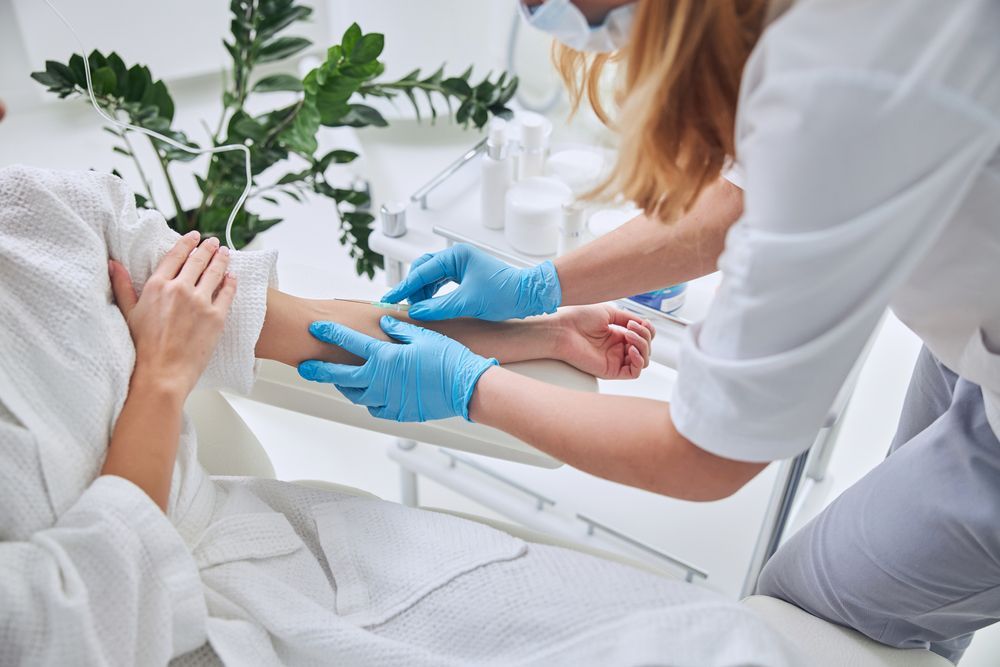
By Mason Lundell
•
June 21, 2024
THE EFFICACY QUESTION: SSRIS VS. TMS VS. KETAMINE In the realm of psychiatric treatment, the landscape is constantly evolving, with new modalities and understandings reshaping our approach to mental health. While SSRIs (Selective Serotonin Reuptake Inhibitors) have long been a cornerstone of treatment for conditions like depression and anxiety, recent advancements and insights compel us to reconsider their role as the panacea they were once thought to be. SSRIs: The Old Guard SSRIs have undeniably played a crucial role in psychiatric care, providing relief for countless individuals grappling with mood disorders. However, as we delve deeper into their long-term effects and explore alternative treatments, it becomes clear that SSRIs may not be the comprehensive solution we once believed them to be. Dr. Rachel Andrews, a psychiatrist at Johns Hopkins, highlights this shift in perspective: "While SSRIs can offer significant relief for acute symptoms, their efficacy over the long term is questionable. Moreover, they often come with a host of side effects, ranging from weight gain to sexual dysfunction, which can significantly impact a patient's quality of life." TMS: A Promising Alternative Transcranial Magnetic Stimulation (TMS) has emerged as a promising alternative to traditional pharmacotherapy. By targeting specific regions of the brain with magnetic pulses, TMS aims to modulate neural activity, offering relief for treatment-resistant depression Major depressive disorder, anxiety, OCD and other conditions. Moreover, TMS-induced neuroplasticity may facilitate the release of neurotransmitters implicated in mood regulation, such as serotonin and dopamine. By promoting neural rewiring and rebalancing neurotransmitter levels, TMS helps alleviate symptoms of depression and other mood disorders. Dr. James Thompson, a neurologist specializing in TMS, asserts, "TMS represents a paradigm shift in psychiatric treatment. Unlike SSRIs, which blanket the brain with neurotransmitter modulation, TMS offers precise, targeted intervention with minimal systemic side effects." Ketamine: Breaking New Ground Ketamine, once primarily known as an anesthetic and recreational drug, has garnered attention for its rapid antidepressant effects. Administered in controlled settings, often in the form of intravenous infusions or nasal sprays, ketamine offers relief for individuals resistant to conventional treatments. Ketamine works by blocking NMDA receptors, which modulates glutamate signaling and promotes synaptic plasticity, leading to rapid antidepressant effects. Additionally, ketamine influences other neurotransmitter systems and exhibits anti-inflammatory properties, contributing to its efficacy in treating depression. Dr. Sarah Patel, a leading researcher in ketamine therapy, explains, "Ketamine's mechanism of action differs from SSRIs, acting on glutamate receptors to promote synaptic plasticity. This unique mode of action suggests a potential role for ketamine in addressing the underlying neurobiological mechanisms implicated in mood disorders." Beyond Symptom Management: Addressing Underlying Causes While SSRIs, TMS, and ketamine offer valuable tools in the psychiatric arsenal, it's essential to recognize that mental health encompasses more than neurotransmitter imbalances. Emerging research suggests that factors like neuroplasticity and immune system dysregulation play significant roles in psychiatric conditions. Dr. Emily Chen, a psychiatrist specializing in integrative medicine, emphasizes this holistic approach: "We're beginning to understand that mental health isn't solely determined by chemical imbalances in the brain. Chronic inflammation, triggered by low-grade infections or environmental factors, can disrupt neural circuits and contribute to psychiatric symptoms." A Multifaceted Approach to Mental Health In conclusion, while SSRIs have served as a cornerstone of psychiatric treatment, our understanding of mental health continues to evolve, prompting a reassessment of traditional paradigms. By embracing modalities like TMS and ketamine and exploring the role of neuroplasticity and immune function, we can move towards a more comprehensive, personalized approach to mental health care. As Dr. Andrews aptly summarizes, "There's no one-size-fits-all solution in psychiatry. By integrating evidence-based treatments and addressing underlying neurobiological mechanisms, we can better meet the diverse needs of individuals struggling with mental illness." With this perspective in mind, let us strive for a future where mental health care is not constrained by outdated paradigms but guided by the latest research and a commitment to holistic well-being.

By Mason Lundell
•
June 21, 2024
Unveiling the Potential of Hyperbaric Oxygen Therapy (HBOT) in Neuropathy Management: A Comprehensive Exploration Neuropathy, whether stemming from diabetes or chemotherapy, significantly impacts an individual's quality of life. The persistent pain, tingling sensations, and numbness can be incapacitating, affecting mobility and overall well-being. While traditional treatments may offer relief, many individuals seek alternative therapies for more effective symptom management. One such promising avenue is Hyperbaric Oxygen Therapy (HBOT), which has shown considerable potential in alleviating neuropathic symptoms by delivering heightened levels of oxygen to damaged tissues. In this comprehensive guide, we'll delve into the scientific underpinnings of HBOT and its efficacy in treating neuropathy, encompassing both diabetic neuropathy and chemotherapy-induced neuropathy. Understanding Neuropathy Neuropathy denotes nerve damage resulting in an array of symptoms, including pain, numbness, tingling sensations, and muscle weakness. It can arise from various factors such as diabetes, chemotherapy drugs, autoimmune diseases, infections, and trauma. Regardless of its origin, neuropathy often entails impaired nerve function and diminished blood flow to affected areas, exacerbating symptoms over time. Hyperbaric Oxygen Therapy (HBOT) HBOT entails the administration of 100% pure oxygen under increased atmospheric pressure within a pressurized chamber. By inhaling oxygen at elevated pressures, the concentration of oxygen in the bloodstream substantially rises, enabling it to dissolve into bodily fluids and reach areas with compromised blood flow, such as damaged nerves. This heightened oxygen supply facilitates cellular repair, diminishes inflammation, and fosters the growth of new blood vessels, ultimately aiding in the healing process. HBOT and Diabetic Neuropathy Diabetic neuropathy, a prevalent complication of diabetes, ensues from prolonged high blood sugar levels that inflict damage on nerves throughout the body. Symptoms may encompass numbness, tingling, burning pain, and weakness, predominantly in the feet and hands. HBOT has emerged as a promising adjunctive therapy for diabetic neuropathy as it addresses the underlying tissue hypoxia commonly observed in diabetic patients. By delivering oxygen-rich blood to damaged nerves, HBOT can alleviate neuropathic pain, enhance sensation, and promote wound healing in individuals with diabetic neuropathy. HBOT and Chemotherapy-Induced Neuropathy Chemotherapy-induced neuropathy represents a common side effect of certain cancer treatments, characterized by nerve damage resulting from the toxic effects of chemotherapy drugs. Symptoms may include pain, numbness, tingling, and weakness, often affecting the hands and feet. HBOT has demonstrated efficacy in mitigating chemotherapy-induced neuropathy by counteracting the oxidative stress and inflammation induced by chemotherapy agents. By supplying ample oxygen to nerve tissues, HBOT helps mitigate nerve damage, alleviate pain, and enhance nerve regeneration, thereby enhancing the quality of life for cancer survivors. The Mechanism of Action The therapeutic effects of HBOT on neuropathy stem from its ability to address tissue hypoxia, inflammation, and oxidative stress, all of which play pivotal roles in nerve damage and neuropathic pain. Oxygen delivered under hyperbaric conditions exerts multiple beneficial effects, including: Enhanced tissue oxygenation: HBOT augments the oxygen content in blood plasma, facilitating oxygen diffusion into tissues with compromised blood flow, including damaged nerves. Anti-inflammatory effects: HBOT diminishes inflammation by modulating immune responses and inhibiting pro-inflammatory cytokines, thereby alleviating neuropathic pain associated with inflammatory processes. Neuroprotection: Oxygen therapy promotes the production of neurotrophic factors and enhances cellular metabolism, supporting nerve repair and regeneration. Improved microcirculation: HBOT stimulates angiogenesis, the formation of new blood vessels, and enhances microcirculation, ensuring adequate oxygen and nutrient delivery to nerve tissues. Conclusion Hyperbaric Oxygen Therapy (HBOT) harbors significant promise as a non-invasive and adjunctive treatment modality for neuropathy, encompassing diabetic neuropathy and chemotherapy-induced neuropathy. By addressing tissue hypoxia, inflammation, and oxidative stress, HBOT aids in alleviating neuropathic symptoms, improving nerve function, and enhancing overall quality of life for affected individuals. While further research is requisite to elucidate optimal HBOT protocols and long-term outcomes, the existing evidence underscores the therapeutic potential of HBOT in neuropathy management. As always, individuals contemplating HBOT should consult healthcare professionals to ascertain its suitability and integration into their treatment regimen.
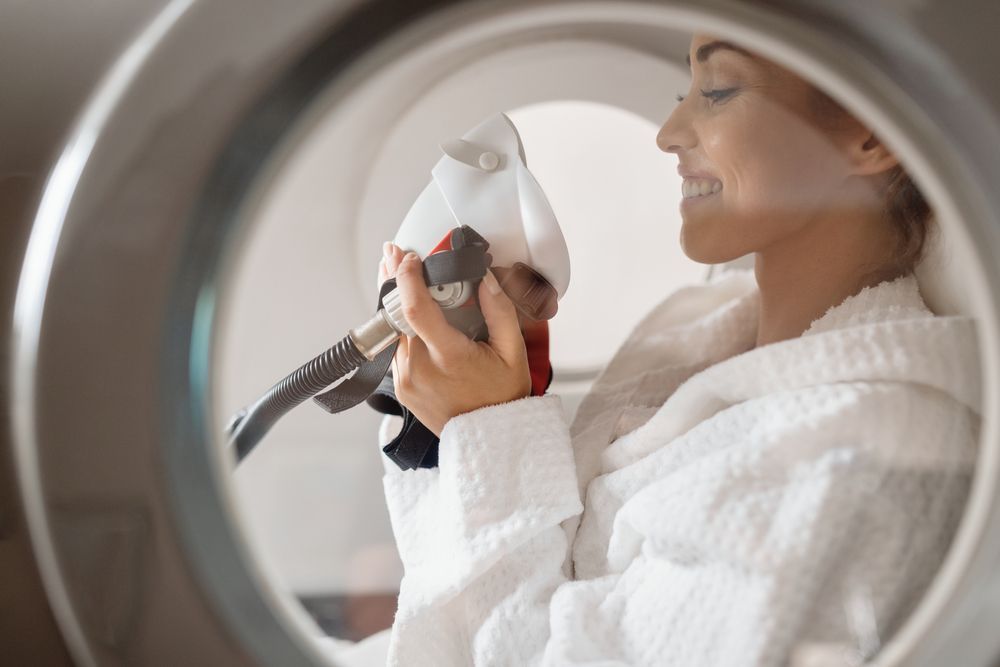
By Mason Lundell
•
June 21, 2024
Elevating Patient Care: The Intersection of Hyperbaric Oxygen Therapy (HBOT) and Neuropathy Treatment As the owner of a leading healthcare clinic committed to providing innovative and effective treatments, I've had the privilege of collaborating with esteemed doctors and researchers to explore the transformative potential of Hyperbaric Oxygen Therapy (HBOT) in addressing neuropathy. In this article, I'll share insights gleaned from interviews with medical experts, highlighting the clinical efficacy, mechanisms, and recommended approaches to utilizing HBOT for neuropathy treatment, as well as the future implications for patient care. Navigating Neuropathy: A Complex Challenge Neuropathy presents a multifaceted challenge for patients seeking relief from debilitating symptoms such as pain, numbness, and dysfunction. At our clinic, we understand the profound impact that neuropathy can have on individuals' quality of life and are committed to offering comprehensive treatment options to address their unique needs. Unpacking the Healing Potential of HBOT HBOT, with its ability to deliver concentrated oxygen to tissues and promote healing, has emerged as a promising therapy for neuropathy. Research from Dr. Sarah Reynolds, a distinguished neurologist, and Dr. Michael Chen, a renowned wound care specialist, has shown valuable insights into the therapeutic mechanisms and clinical applications of HBOT for neuropathy. According to Dr. Reynolds, HBOT has shown remarkable efficacy in reducing neuropathic pain and improving nerve function in select patient populations. Dr. Chen underscores the role of HBOT in facilitating wound healing and tissue repair in patients with neuropathic ulcers, emphasizing the importance of interdisciplinary collaboration in optimizing patient outcomes. Validating HBOT Through Clinical Evidence While HBOT is FDA-approved for specific indications such as wound healing and chemotherapy-related damage, its off-label use in neuropathy treatment is supported by emerging evidence and clinical experience. Through rigorous research and collaboration with leading researchers, we've seen firsthand the compelling data supporting the efficacy of HBOT in alleviating neuropathic symptoms and improving overall patient well-being. Studies published in reputable medical journals, such as the Journal of Neurology and the Journal of Wound Care, have demonstrated the beneficial effects of HBOT on neuropathy-related pain, nerve function, and wound healing. These findings provide further validation of HBOT as a viable treatment option for neuropathy and underscore its potential to enhance patient care and outcomes. Embracing a Patient-Centered Approach At our clinic, we prioritize a patient-centered approach to care, ensuring that each individual receives personalized treatment tailored to their unique needs and medical history. With HBOT, we offer a comprehensive treatment approach that addresses the underlying mechanisms of neuropathy, promotes healing, and improves quality of life for our patients. Looking ahead, we remain committed to advancing the field of neuropathy treatment through ongoing research, collaboration, and innovation. By harnessing the healing potential of HBOT and leveraging insights from esteemed medical experts and researchers, we aim to elevate patient care and provide hope and relief to individuals living with neuropathy. In conclusion, HBOT represents a powerful tool in the arsenal of neuropathy treatment, offering tangible benefits and transformative results for patients in need. Through our dedication to evidence-based practice and interdisciplinary collaboration, we are proud to champion the integration of HBOT into our comprehensive approach to neuropathy care, empowering individuals to reclaim their health and well-being.
480-536-9744
Hours:
Monday - Friday: 8am - 5pm
Saturday - Sunday: by appointment only
Service
Areas
© 2025
Copyright. Unchained Wellness Clinic All rights reserved.

